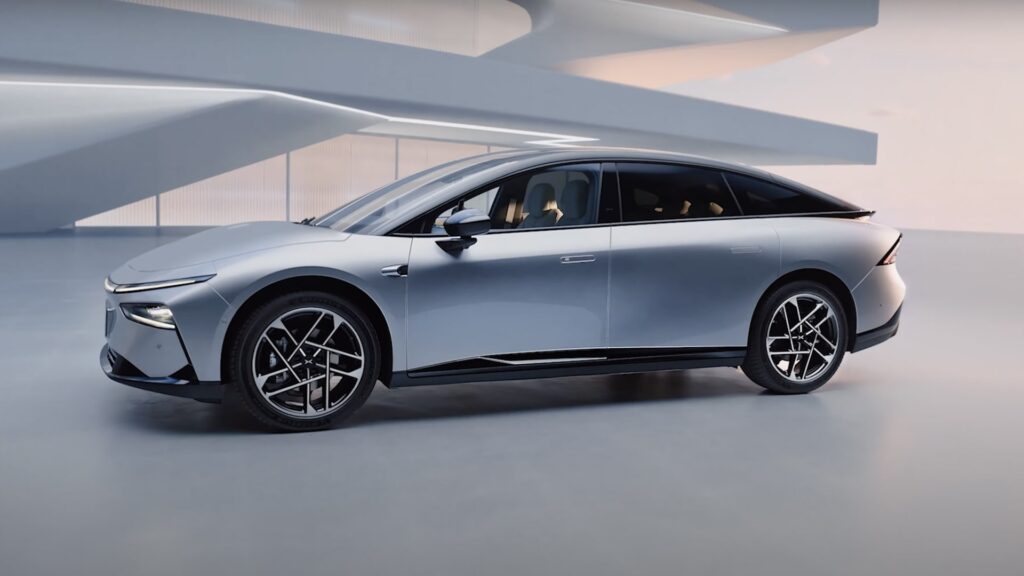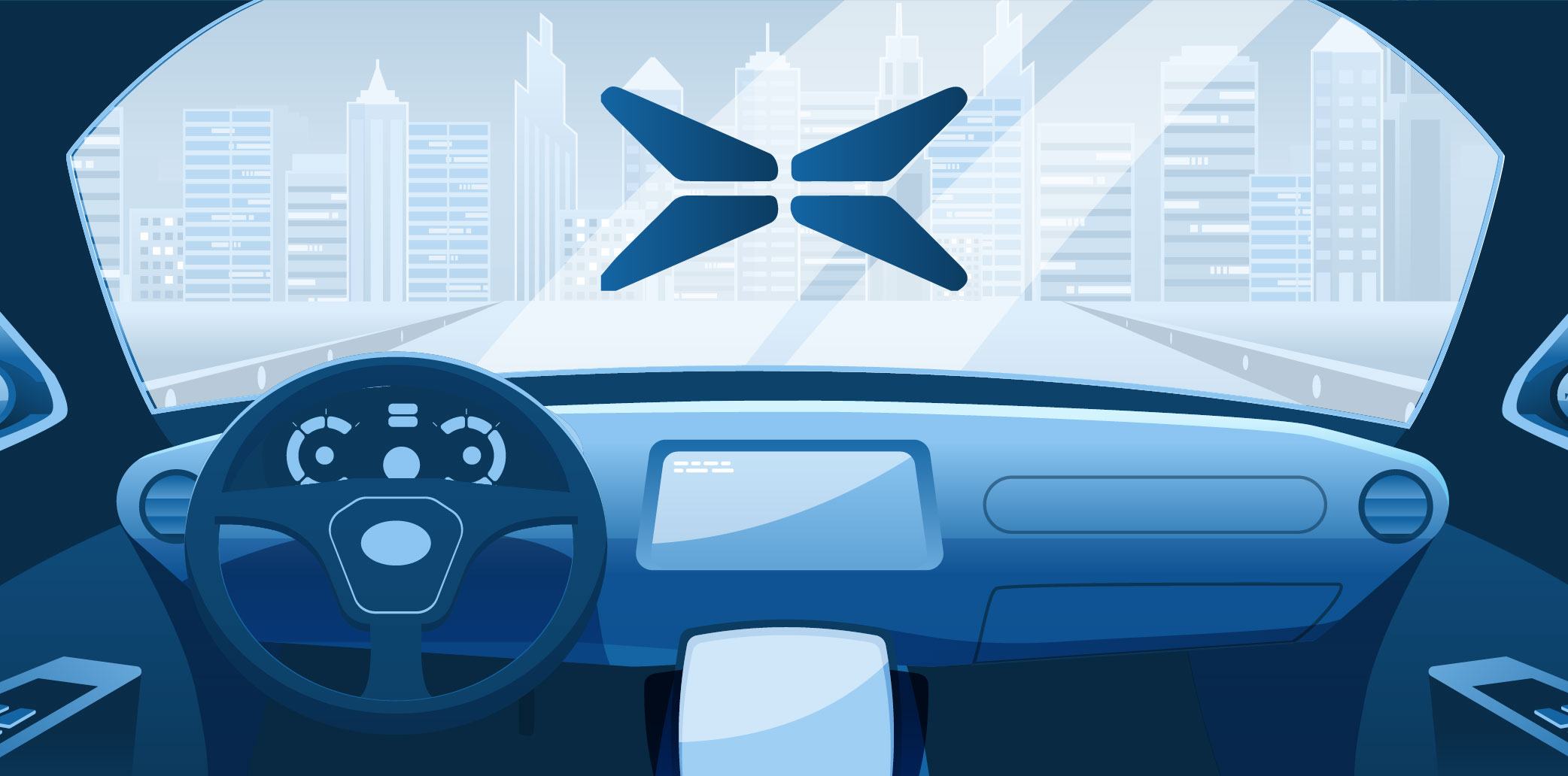Following the successful launch of the Mona M03 and the swift delivery of 10,000 units, Xpeng Motors is poised to build on its momentum. On October 10, Xpeng introduced the P7+, which is positioned as a spacious electric coupe under RMB 300,000 (USD 42,000). The new electric vehicle is set to officially enter the market in November, with deliveries starting immediately upon launch.
The P7+ joins Xpeng’s P7 series, but unlike the sportier, more personalized P7 and P7i models, this new version emphasizes comfort and space. At the launch event, CEO He Xiaopeng highlighted the vehicle’s generous interior by demonstrating its capacity to hold 33 suitcases.

A key feature of the P7+ is its advanced, purely vision-based intelligent driving system. According to Xpeng, the AI-driven “Eagle Eye” system allows the P7+ to achieve full autonomous driving without using LiDAR, making it operational nationwide. This marks a significant step forward in the competition between Xpeng and Tesla for leadership in autonomous driving technology.
The P7+ aims to attract buyers with a combination of spaciousness and advanced technology, filling a gap left by other electric sedans like Tesla’s Model 3 and Xiaomi’s SU7.
The road ahead for electric sedans, however, is not without obstacles. The growing popularity of plug-in hybrid electric vehicles (PHEVs) and extended-range electric vehicles (EREVs), combined with slowing sales of pure EVs, means that only a few electric sedans have consistently sold over 10,000 units per month—Tesla’s Model 3 and Xiaomi’s SU7 being notable examples.
For Xpeng, the P7+ is a critical component of its long-term strategy. In late August, Xpeng launched the Mona M03, the first in its Mona series, which reportedly garnered over 100,000 orders. The Mona M03’s competitive price of RMB 119,800 (USD 16,772) spurred strong sales but also pushed Xpeng’s product lineup toward the lower price range.
While the Mona M03 helped address short-term challenges, models like the P7+ are needed to establish Xpeng’s market position, set a new benchmark for its products, and stabilize its pricing strategy.
Targeting young buyers with its smart features, the Mona M03 contrasts with the P7+, which is designed with families in mind. “Once these two models ramp up production, we will see a significant expansion in market share,” He said at the event. However, with the P7+ positioned at a higher price point, replicating the Mona M03’s success will present new challenges for Xpeng.
How will Xpeng’s P7+ stand out?
Tesla’s Model 3 has dominated the RMB 200,000–300,000 (USD 28,000–42,000) segment for some time. Xiaomi’s SU7, launched in March, quickly gained traction, with sales exceeding 10,000 units per month since June and averaging over 13,000 units monthly.
Tesla’s strong brand presence has made the Model 3 ubiquitous in some cities, while Xiaomi’s SU7 has attracted a substantial customer base with its standout design and internet brand image. Other electric sedans, such as BYD’s Han and the Zeekr 001, perform steadily, with monthly sales ranging from 8,000 to 10,000 units. These are considered moderate successes.
The BYD Han’s dynamic styling appeals to a broad audience, while the Zeekr 001’s sporty station wagon design and driving experience attract younger buyers. Though autonomous driving is not the primary draw for these models, their growing brand recognition and product quality continue to drive sales.
For the P7+ to succeed, it will need to offer unique features and create a sense of product scarcity. Xpeng’s earlier P7 model enjoyed moderate success, with the 2020 version peaking at 9,000 monthly sales by 2022.
The original P7 stood out for its design, which appealed to younger buyers, and for its autonomous driving technology, which posed a serious challenge to Tesla at the time. However, as competition in the electric sedan market intensified and price wars escalated, the refreshed P7i, launched in 2023, struggled to recapture the same success, with combined sales of the P7 and P7i reaching just 10,000 units in the first half of this year.
The P7+ is pivotal to Xpeng’s strategy
Xpeng remains optimistic about the mid- to large-sized electric sedan market in the RMB 200,000–300,000 range. After the success of the Mona M03, Xpeng appears to have found a winning formula: striking design, advanced autonomous driving technology, and aggressive pricing.
The P7+ follows this formula. Its distinctive design, with a five-meter-long body and a short hood, creates a sleek fastback profile with fluid side body lines. The interior is spacious enough to accommodate 33 suitcases.
Built on Xpeng’s “Fuyao” architecture, rather than the older P7 platform, the P7+ shares the 800V high-voltage electric platform with models like the G6 and G9, ensuring robust performance.
Notable features include a 15.6-inch central touchscreen, a Qualcomm Snapdragon 8295P chip, ventilated and heated second-row seats with massaging functions, and rear tray tables, among other amenities. Powering the vehicle are two battery options: a 60.7-kilowatt-hour pack and a 76.3-kWh pack, with a maximum range of 710 kilometers.
One of Xpeng’s biggest advantages lies in its smart technology. The Eagle Eye system, relying solely on 26 sensors and two Nvidia Orin-X chips, enables advanced autonomous driving without the need for LiDAR. This is the first time Xpeng has implemented a purely vision-based system for autonomous driving, which will be standard on the P7+ and available on the premium version of the Mona M03.
Xpeng’s achievement of vision-only autonomous driving is rare in the industry. Only a few players, including Xpeng and Jiyue (leveraging Baidu’s driving technology), have reached this level. Xpeng claims that once autonomous driving hardware is standardized, software updates will accelerate, giving it an advantage over competitors who rely on third-party suppliers.
However, as LiDAR becomes standard in EVs priced above RMB 200,000, competitors like IM Motors’ L6 and the new BYD Han have already adopted the technology. For the P7+ to stand out, Xpeng must prove the superiority of its vision-based system.
Establishing a foothold in the electric sedan market is no easy task. Nio’s ET5 and ET5T saw initial success but have since declined, while models like the Luxeed S7 and Avatr 12, despite strong designs and autonomous features, have struggled to achieve strong sales.
In the coming month, pricing will be a key challenge for the P7+. If Xpeng can set a competitive price and effectively position itself against rivals, the P7+ could secure a strong market presence upon release.
The Mona series’ success has helped Xpeng emerge from a challenging period. With sales recovering to over 20,000 units in September, Xpeng has managed to shake off its recent decline. The rapid launch of the P7+ is not only an effort to elevate the brand but also a test of the operational improvements Xpeng has implemented over the past two years.
KrASIA Connection features translated and adapted content that was originally published by 36Kr. This article was written by Li Anqi for 36Kr.

